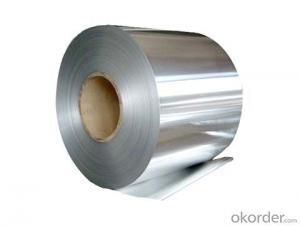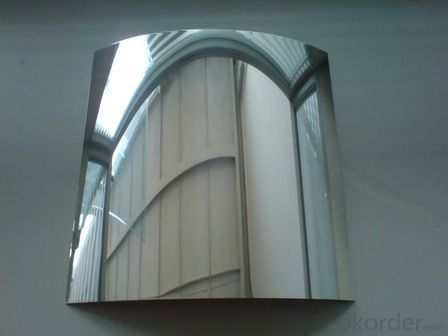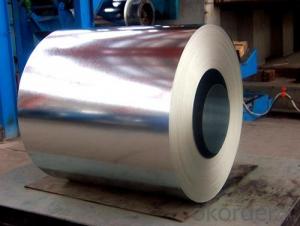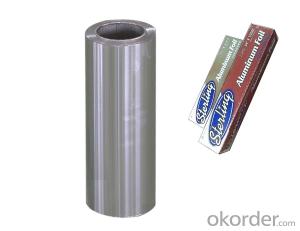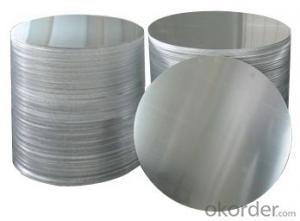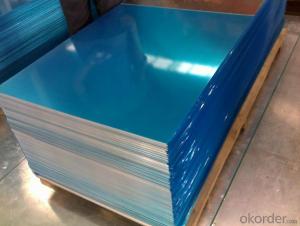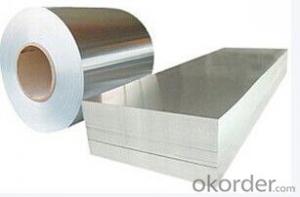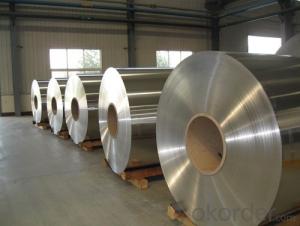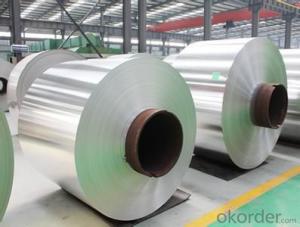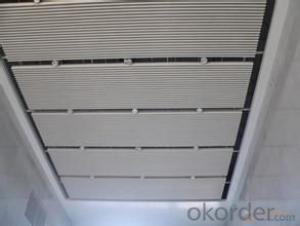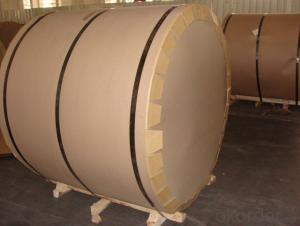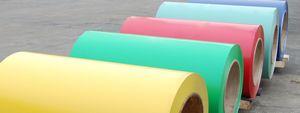1100 Series Mill Finished Aluminum Coils Without Coating for Package
- Loading Port:
- Shanghai
- Payment Terms:
- TT OR LC
- Min Order Qty:
- 5 m.t.
- Supply Capability:
- 3000 m.t./month
OKorder Service Pledge
OKorder Financial Service
You Might Also Like
Specification
1.Structure of Mill Finished Aluminium Coils without Coating for Package
Mill Finished Aluminium Coils without Coating for Package is one semi-finished aluminium material. This strip can be rolled down to aluminium coil,sheet,circle ect. The alloy AA1050 is widly used in building, industry ect. Its weight is much lower than steel. So many customers choosed aluminium material instead of steel.
2. Main features of Mill Finished Aluminium Coils without Coating for Package
a.Competitive price---We have our own mills and can produce mill finished aluminium coils, so we can control the production cost better.
b.Professional after-sale service---We have more than 15 years exportation experience and you need not worry about the exporation problems.
c.Fast delivery time---We can control the delivery time within 35 days.
3. Image of Mill Finished Aluminium Coils without Coating for Package
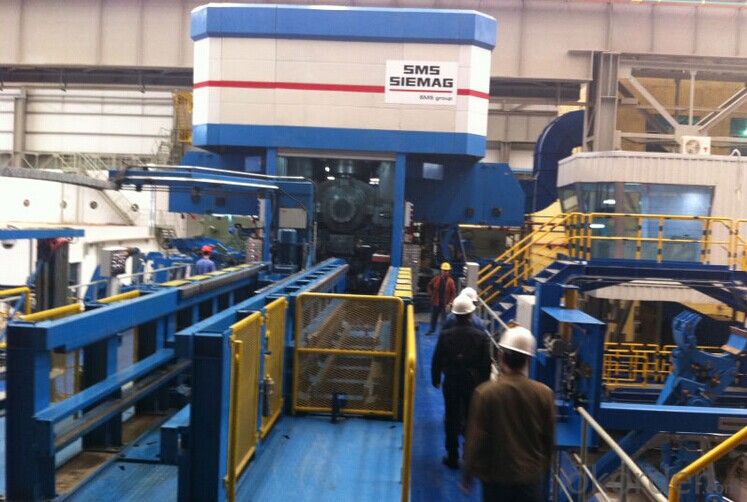
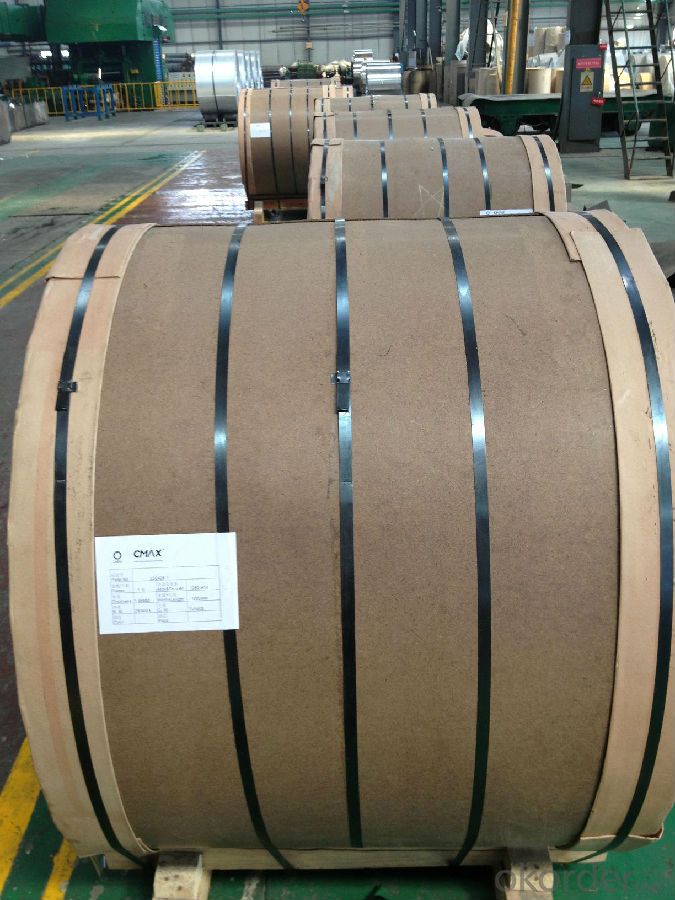
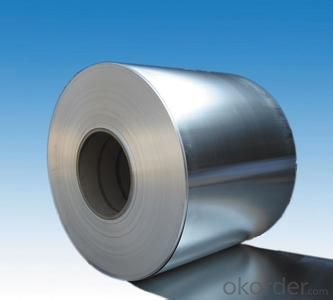
4. Product Specification of Mill Finished Aluminium Coils without Coating for Package
| ALLOY | TEMPER | THICKNESS | ROLLING | WEIGHT |
| AA1050 | H18 | 0.2MM-3MM | CONTINUOUS | 2 TONS |
5.FAQ:
What is the quality standard?
---Usually our standard is GB3880-2006
What is the largest width?
---It is 2300mm
What is the MOQ?
---Usually we can accept 80 tons.
- Q: What are the different types of edges available for aluminum sheets?
- There are several different types of edges available for aluminum sheets, depending on the specific application and desired aesthetic. 1. Straight Edge: This is the most basic type of edge, where the aluminum sheet is cut in a straight line with no additional finishing or shaping. 2. Beveled Edge: A beveled edge is created by cutting the aluminum sheet at an angle, usually 45 degrees, resulting in a chamfered or sloping edge. This type of edge is commonly used for decorative purposes or to reduce sharpness. 3. Rolled Edge: A rolled edge is formed by bending the edge of the aluminum sheet, creating a smooth, rounded edge. This type of edge is often used for safety reasons as it eliminates sharp edges. 4. Hemmed Edge: A hemmed edge is created by folding the edge of the aluminum sheet back on itself, resulting in a double layer of material. This type of edge provides added strength and durability and is commonly used for applications where the edge will be exposed or subjected to wear and tear. 5. Tapered Edge: A tapered edge is formed by gradually reducing the thickness of the aluminum sheet towards the edge. This type of edge is often used in aerospace and automotive industries to reduce weight while maintaining strength. 6. Flanged Edge: A flanged edge is created by bending the edge of the aluminum sheet at a right angle, creating a lip or flange. This type of edge is commonly used for applications where the aluminum sheet needs to be attached or joined with other materials. Overall, the choice of edge type depends on the specific requirements of the project, including functionality, aesthetics, and safety considerations.
- Q: as for heating coil and aluminum sheet, which one is better for heating?
- Both of them have advantage. It depends on the new product type it’s applied. Heating coil: it’s applied in some products with high temperature and large heat release, such as oven and other types.
- Q: Can aluminum sheets be used for water tanks?
- Yes, aluminum sheets can be used for water tanks. Aluminum is a corrosion-resistant material and is commonly used in the construction of water tanks due to its durability and ability to withstand harsh weather conditions.
- Q: Does Aluminum Foil really work to help beat the summer heat?I live in San Diego which is known for having perfect weather pretty much all year round, but just yesterday we are starting to get some record breaking heat. Most apartments, condos, and houses do not have A/C because like I just mentioned it's usually in the high 60s or low 70s during the spring and summer, perfect.Will Aluminum Foil work or can someone else suggest anything else?!PLEASE note that I'm just putting aluminum foil on my bedroom window which just faces some other apartment complex and I am not concerned with the aesthetics. I might consider putting something up (but just not sure what) on the living room window other than aluminum foil since everyone can see that window.
- If it was me id put window tint that has a reflective(aluminum coating) facing outward. It works well and is more appealing,also your apt mgr may not approve of the foil on the window.
- Q: This question asks about the expected duration or service life of aluminum siding or cladding used in construction.
- <p>The lifespan of aluminum siding or cladding typically ranges from 20 to 50 years, depending on the quality of the material, installation, and environmental conditions. High-quality aluminum siding, when properly maintained and installed, can last up to 50 years. It is resistant to rust and decay, making it a durable choice for exterior cladding. However, factors such as extreme weather conditions, poor installation, and lack of maintenance can reduce its lifespan.</p>
- Q: Can 101 aluminum sheets be customized in terms of size and thickness?
- Yes, 101 aluminum sheets can be customized in terms of size and thickness according to specific requirements and needs.
- Q: Are the aluminum sheets suitable for manufacturing aircraft interiors?
- Aluminum sheets are an excellent choice for producing aircraft interiors. Not only is aluminum lightweight, but it is also strong and durable, making it perfect for aerospace applications. Its high strength-to-weight ratio allows for the creation of fuel-efficient and lightweight aircraft. Moreover, aluminum sheets are highly resistant to corrosion, which is vital in the aerospace industry. Aircraft interiors are exposed to various environmental factors like humidity and temperature changes. The corrosion resistance of aluminum ensures that the aircraft interior components remain reliable and long-lasting, thereby reducing maintenance and replacement expenses. Additionally, aluminum sheets can be easily fabricated and shaped into different forms. This feature enables the production of intricate and customized aircraft interior components. Aluminum sheets can be effortlessly cut, bent, and welded, offering design flexibility and allowing manufacturers to create visually appealing interior designs. Apart from these technical advantages, aluminum is also an environmentally sustainable material. It is 100% recyclable, making it an eco-friendly option for aircraft interiors. Recycling aluminum requires significantly less energy compared to primary aluminum production, thereby reducing the carbon footprint associated with manufacturing. In conclusion, the combination of its lightweight nature, corrosion resistance, ease of fabrication, and sustainability makes aluminum sheets highly suitable for manufacturing aircraft interiors.
- Q: How are aluminum sheets manufactured?
- Aluminum sheets are manufactured through a process called rolling. The process starts with aluminum ingots, which are heated and then passed through a series of rolling mills. These mills apply pressure to the ingots, reducing their thickness and lengthening them at the same time. As the ingots pass through the mills, they are gradually transformed into thin sheets of aluminum. The rolling mills consist of a series of rollers, which are typically made of steel. The rollers rotate in opposite directions, and as the aluminum passes between them, it is squeezed and stretched. This continuous process of rolling helps to refine the aluminum's grain structure and improve its mechanical properties. To ensure the proper thickness and surface finish, the aluminum sheets may go through multiple passes in the rolling mills. Each pass gradually reduces the thickness of the sheet until the desired thickness is achieved. The final pass also imparts the desired surface finish. After the rolling process, the aluminum sheets may undergo further treatments such as annealing or surface treatments to enhance their properties or appearance. Annealing involves heating the sheets to a specific temperature and then cooling them slowly to relieve internal stresses and improve their strength. Once the sheets are manufactured and treated, they are typically cut into desired sizes and shapes. This can be done through shearing, which involves cutting the sheets with sharp blades, or by using specialized cutting machines. Overall, the manufacturing of aluminum sheets is a complex and precise process that involves heating, rolling, and treating the aluminum to achieve the desired thickness, finish, and properties.
- Q: How do you form curves or shapes in aluminum sheets?
- There are several methods to form curves or shapes in aluminum sheets. One common technique is called bending, where the sheet is clamped and then gradually bent using a mechanical press brake or a hammer. Another method is called roll forming, which involves passing the aluminum sheet through a series of rollers to achieve the desired shape. Additionally, aluminum sheets can be molded or pressed into curves or shapes using specialized tools or dies.
- Q: I've heard certain eyeliners contain lead and that it's a harmful (cancerous) ingredient. I use Urban Decay's 24/7 eyeliner and on the box it says it contains aluminum powder. Is that another word for lead? If not, is aluminum powder harmful too? Thanks!
- ....are you on crack?! Aluminum (Al) and Lead (Pb) are both elements, and *very* different elements, although they are both metals. Lead is harmful, Aluminum can also be harmful; it has been shown to cause some people to get Alzheimer's disease in high quantities, so it is best avoided but not horrible. The principal symptom of aluminum poisoning is the loss of intellectual function; forgetfulness, inability to concentrate, and in extreme cases, full blown dementia. It is also known to cause bone softening and bone mass loss, kidney and other soft tissue damage, in large doses it can cause cardiac arrest.
Send your message to us
1100 Series Mill Finished Aluminum Coils Without Coating for Package
- Loading Port:
- Shanghai
- Payment Terms:
- TT OR LC
- Min Order Qty:
- 5 m.t.
- Supply Capability:
- 3000 m.t./month
OKorder Service Pledge
OKorder Financial Service
Similar products
Hot products
Hot Searches
Related keywords
